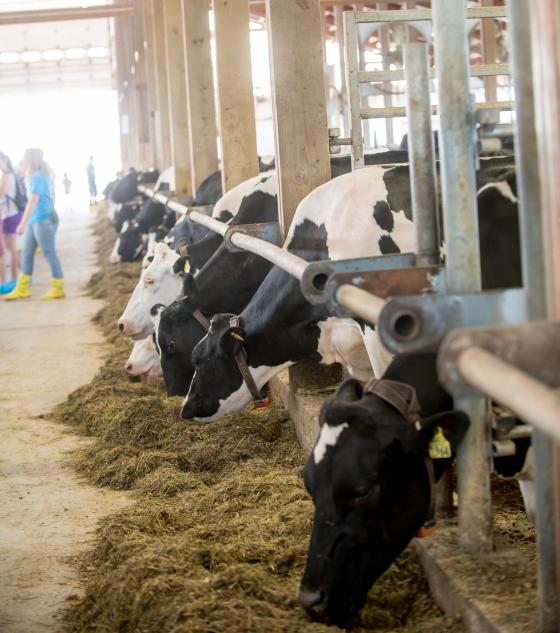Posted February 9, 2016 at 05:37am by Laura Hardie
Vermont Dairy Co-op First to Adopt New Technology to Improve Value of Milk & Farm Management Practices

St. Albans, VT – The St. Albans Cooperative Creamery is the first dairy cooperative in the nation to provide new information to farmers about the fatty acids that make up the milk fat in their cow’s milk. Local researchers found a direct correlation between the fat content in milk and farm management practices – this information will allow farmers to improve the way they feed and manage their cows as well as earn a higher pay for their milk. Recommendations from this research will support the economic viability of local dairy farms and ensure that consumers continue to have access to local, affordable dairy products.
“Thanks to the new milk analysis technology, we have developed recommendations farmers can use to improve their cows digestive health and how their cows are cared for,” explained Tom Gates, the Cooperative Relations Manager for St. Albans Cooperative Creamery. “These recommendations will allow farmers to produce milk with a higher content of protein and fat which they earn a higher price for.”
Dairy farmers will learn about the new technology at the St. Albans Co-op Annual Meeting on Saturday, February 13 at the St. Albans Town Educational Center. Rebecca Howrigan and her family’s farm is a member of the St. Albans Co-op. “We are excited to begin applying this new information to our farm,” said Howrigan. “My family will use it to make sure our cow’s diet meets their nutritional needs, and it will help us make decisions to ultimately produce higher quality milk.”
Recommendations to farmers on how to use this technology were developed by a team of dairy scientists from the University of Vermont, Miner Institute, Delta Instruments, and Cornell University. The technology measures fatty acids in milk, which are the building blocks of milk fat.
“Healthy, well-nourished cows naturally produce milk with a higher percentage of fat and protein,” said Melissa Woolpert, of the Miner Institute. “The extra fat and protein won’t affect the fat and protein content of the milk we drink, but instead can be used to make dairy products such as ice cream, yogurt and cheese.”
Not only will the research allow farmers to learn about the best-management practices to care for their animals, it also means that farmers can improve their bottom line at a time when the low milk price is tightening farm budgets.
“Because farmers are paid more for milk with higher fat and protein, they are constantly looking for ways to improve the amount of fat and protein in the milk their cows produce,” Gates said. “Higher fat and protein means healthy cows and more valuable milk, a win for the cows, the farmers, and our local agricultural economy.”
About the St. Albans Co-op:
The St. Albans Cooperative Creamery is a member-governed dairy cooperative committed to providing service, stable markets and the greatest achievable return to our members by delivering the highest quality milk, milk products, and services to our customers. The Cooperative provides active leadership in the dairy industry and political environment to benefit all dairy farmers.
